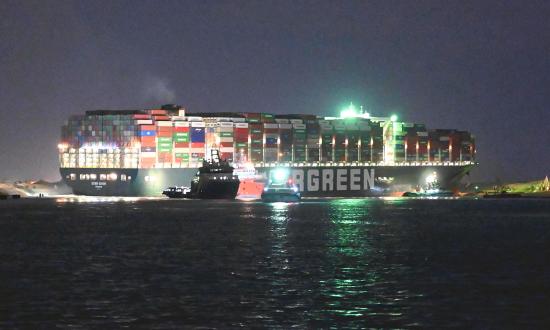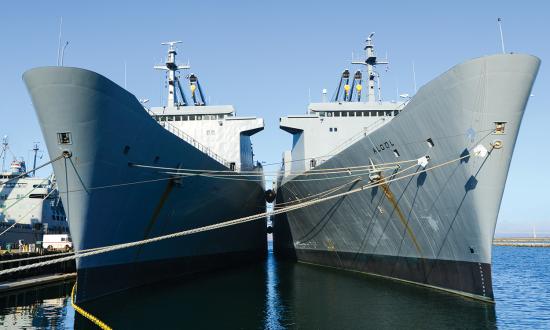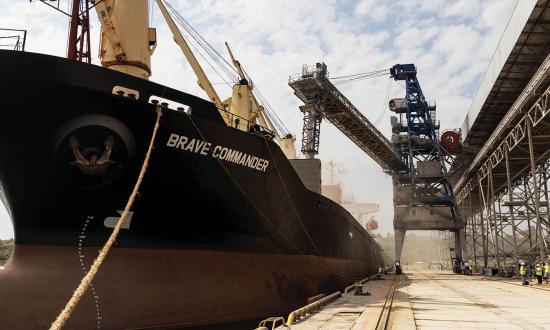The Container Revolution
The process of containerization fundamentally changed global markets and port infrastructure since it began in the 1970s. Before then, a small number of high-value goods such as textiles, machinery, and chemicals dominated global trade. Prized cargo such as machinery and chemicals would make the precarious journey across the sea, exposed to the elements, often facing damage and requiring a battalion of dock workers for loading and unloading.
These goods were typically shipped in breakbulk form, meaning they were loaded and unloaded piece by piece and extremely vulnerable to accidents and, once at sea, at risk of water damage. This was a labor-intensive and time-consuming process, and it made shipping costs high.
Enter a new approach: 20- and 40-foot shipping containers. Standard-sized shipping containers revolutionized global trade by making it possible to transport goods of all types quickly, cheaply, and more safely. With the proper equipment, containers can be easily loaded onto ships, trains, and trucks.
The littorals became the global trade hotspots. Containerization significantly reduced the risk of damage from perils of the sea, and shipping costs declined. This made it possible to ship a wider range of goods, including low-value goods such as clothing and electronics, to international markets. To compete in size and volume with conventional European and North American ports (such as Rotterdam and New York), major ports in the Asia-Pacific region (many located along the southeast coast of China) equipped themselves with the massive cranes necessary to process containers.
Before containerization, most trade was conducted among developed countries. But containerization made it cheaper and safer for developing countries to export their goods to developed countries. Consequently, trade routes and volumes began to concentrate in Asia, with the majority of the world’s top ten ports now located there. Ninety percent of the global economy’s trade in 2022 traveled by ocean routes in more than 5,600 containerized ships—owned by large freight companies such as Maersk and Evergreen—that service nearly 52 percent of all global trade.
Commercial ships have continually evolved and expanded to enable more efficient transport. Traders now predominantly carry groceries, electronics, paper, machinery, chemicals, autos, and textiles. Onboard container scanning and loading technology has given operators faster turnarounds, leading them to build ever-larger ships that can carry more cargo. The table below shows how ships have become behemoths—Panamax (30 percent of all cargo), Post-Suezmax (25 percent), Postmalaccamax (21 percent), Suezmax (13 percent), and Postpanamax (10 percent).
The expansion of merchant fleets to handle bigger volumes across diverse markets and the growth of Asia as a global trading hub have both been facilitated by containerization. This revolution has transformed trade routes, empowered developing nations, and fostered a global economy more interconnected than ever before.
Global Oil Trade Dominates the Sea Lanes
A working knowledge of energy transportation networks is essential for comprehending the economic drivers underpinning the U.S. Navy’s mission. The oil trade dominates maritime shipping routes, with strategic choke points seeing huge volumes of tanker traffic.
Very large crude carriers (VLCCs) and other vessels depend on these strategic sea lanes to move oil from major and other overseas producers to North American, European, and Asian markets cost effectively. Disruption causes energy security concerns that often result in price spikes and interrupted flow.
The list (bottom right) tells the story, showing the choke points on sea lanes most traveled by trade in descending order of importance. The two most important are the Strait of Hormuz between the Persian Gulf and Arabian Sea, with roughly 35 percent of all seaborne global oil shipments sailing through, and the Strait of Malacca between Indonesia and Malaysia seeing around 25 percent. That amounts to tens of millions of barrels per day.
The world’s largest and busiest ports play a vital role in facilitating global oil trade. Just four ports in China account for most of that country’s petroleum imports—Shanghai, Ningbo-Zhoushan, Guangzhao, and Qingdao. South Korea’s Busan takes in 18 percent of that nation’s crude imports. Rotterdam is Europe’s oil nucleus. Across the Atlantic, Houston leads the United States in foreign tonnage of tankers. Los Angeles feeds U.S. West Coast oil imports. In the Middle East, Dubai’s Jebel Ali and Iran’s Kharg Island drive regional petroleum exports. Day and night, these indispensable ports enable billions of barrels to traverse the oceans.
The global crude oil tanker fleet relies heavily on VLCCs, Suezmax, and Aframax tanker classes that together transport more than 80 percent of all seaborne oil. VLCCs account for more than 40 percent by themselves, each able to carry nearly 2 million barrels through strategic choke points.
Suezmax tankers hold up to 1 million barrels and account for around 20 percent of the global tanker fleet, while Aframax vessels—up to 680,000 barrels—carry just under 20 percent. These large tankers minimize costs and maximize economies of scale. Safe passage for massive merchant ships is essential to keep petroleum flowing through the arteries of today’s energy and petrochemical landscape.













